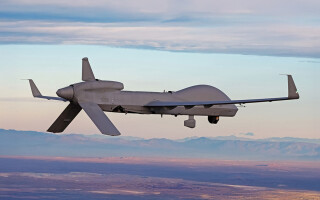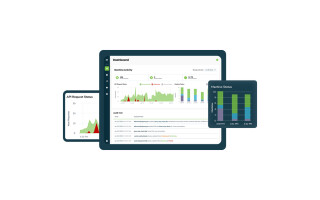We’ve listened to many customers describe the type of detect-and-avoid (DAA) needs they have for their concept of operations (ConOps), usually pausing to ask about their existing knowledge of DAA and generally hearing responses that are informed by “industry knowledge.” While most of the community working in the uncrewed aircraft systems (UAS) industry is well-informed, there are recurring themes that would benefit from the subtle distinction about what is – and importantly – what is not, DAA.
Military Embedded Systems
Op-Eds
GIVING BACK: The Camaraderie Foundation - Blog
June 11, 2025Each issue, the editorial staff of Military Embedded Systems will highlight a different organization that benefits the military, veterans, and their families. We are honored to cover the technology that protects those who protect us every day.
GUEST BLOG: Smarter by design – How AI Is rewriting the rules of defense engineering - Blog
June 11, 2025Today’s defense and intelligence missions face a persistent challenge in that high-fidelity optics and sensor systems are expensive and slow to produce. The sector remains stuck in the size, weight, power, and cost (SWaP-C) dilemma, where engineering tradeoffs restrict performance, delay innovation, and increase costs. However, artificial intelligence (AI) can now be harnessed to model millions of design iterations in seconds, allowing for advances in materials such as metasurfaces and metalenses to be incorporated into exquisite optic and system systems helping to overcome traditional SWaP-C limitations.
GUEST BLOG: 5G – critical to modernizing federal IT - Blog
June 11, 2025The rapid expansion of 5G is transforming the Internet of Things (IoT), enabling greater integration of devices at the edge of the network. This advancement is particularly impactful for government applications, where 5G enhances national-security operations, improves military surveillance capabilities with drones, and enables faster and more secure data transmission for emergency response.
GUEST BLOG: Smarter, tougher networking – How AI can help in DDIL environments - Blog
June 11, 2025The aim of the U.S. Department of Defense (DoD) Combined Joint All-Domain Command and Control (CJADC2) is clear: to enable the military to make faster and better-informed decisions to achieve decision advantage over its adversaries. But the path to that goal is anything but straightforward.
GUEST BLOG: RF interconnects and military performance - Blog
May 09, 2025Modern military platforms demand increasingly sophisticated radio-frequency (RF) interconnect solutions that can perform reliably in the most challenging environments while meeting strict size, weight, and power (SWaP) requirements. Decades of development across the RF industry have led to considerable innovation in supporting these mission-critical applications.
GUEST BLOG: AI will help to navigate the newest defense frontier: the Arctic - Blog
May 09, 2025At 4% of the Earth’s surface, the Arctic is both the latest and least-explored global frontier. The region will define U.S. and European defense strategies for a generation, and scaling polar preparedness is now recognized as an imperative across all military domains.
GUEST BLOG: Changes in naval warfare -- AI and unmanned systems at WEST 2025 - Blog
April 29, 2025Over about 20 years of working in U.S. Navy systems technology development – including must-have upgrades in radar, electronic warfare (EW), laser weapons, and more – I’ve witnessed firsthand how technology transforms naval warfare: The changes aren’t rapid! Delivering new transformative capabilities can take decades, from requirements development to securing funding to system development, integration, and testing.
GUEST BLOG: The demand-side of worldwide military markets - Blog
April 24, 2025WARFARE EVOLUTION BLOG: The time has arrived for us to pull together the previous eight articles about the worldwide military platform markets, and organize that data in a clear and informative manner. We could spreadsheet all these numbers and produce some scatter plots or bubble charts. But, they seem so cold and dull. So, let’s take a more aesthetic and artistic approach, the "feng shei statistical analysis method” using balance and harmony. That requires a modified tree diagram. Everybody loves a good tree diagram.
GIVING BACK: The Warrior Alliance - Blog
March 17, 2025Each issue, the editorial staff of Military Embedded Systems will highlight a different organization that benefits the military, veterans, and their families. We are honored to cover the technology that protects those who protect us every day.
GUEST BLOG: The U.S. Army’s SBOM mandate: A catalyst for software supply-chain security - Blog
March 17, 2025The U.S. Army’s recent mandate for software bills of materials (SBOMs) marks a significant step forward in bolstering software supply-chain security. This proactive measure, driven by President Biden’s 2021 executive order on cybersecurity, aims to improve the visibility and security of software components. As the federal government and the U.S. Department of Defense (DoD) prioritize supply-chain security, we can expect SBOM requirements to become a standard across all military branches.
GUEST BLOG: Solving harsh environment challenges in fiber applications - Blog
March 17, 2025When designing components for aerospace and defense systems, engineers must design not only for performance but also for reliability as many military applications fall under extreme environmental conditions. These conditions challenge the reliability, durability, and operational efficiency of equipment, necessitating innovative engineering approaches – especially with fiber-optic interconnect solutions that must withstand high demands in the field.
MOSA reaffirmed, empowering small business - Blog
February 27, 2025Fans of the U.S. Department of Defense’s (DoD’s) modular open systems approach (MOSA) mandate got a nice surprise before the December holiday season: a new Tri-Service memo emphasizing continued support for MOSA, well-timed with new DoD leadership coming in focused on reforming acquisition.
GUEST BLOG: Securing military embedded systems -- three challenges - Blog
February 13, 2025Embedded systems form the backbone of modern defense capabilities, controlling everything from weapons systems and communications to flight controls and mission-critical sensors. As adversaries become increasingly sophisticated with regard to cyberwarfare, securing the software within these embedded systems is necessary to maintain military advantage and operational resilience.
GUEST BLOG: The U.S. Army's new SBOM requirement - Blog
February 13, 2025It’s in the U.S. Army’s nature to act with precision and synchrony when executing complex tasks such as multidomain operations, training, and logistics, so why would we expect anything less from the software that powers it?
-
Training and simulation systems to support Saab GlobalEye under new CAE agreement
November 21, 2025
-
Next-gen pilot training system to be developed by Saab, Boeing, and BAE Systems
November 19, 2025
-
KC-390 refueling capability validated with Gripen E in Brazilian test campaign
November 17, 2025
-
F-35 air combat training subsystems to be delivered by Cubic
November 13, 2025
Radar/EW
-
Electronic warfare and the evolving landscape: Focus of upcoming AOC symposium
December 04, 2025
-
Next-gen aircraft protection technologies sought by U.S. Air Force
December 03, 2025
-
Electronic warfare threat-detection support to be provided to U.S. Army by CACI
December 03, 2025
-
PRODUCT OF THE WEEK: Annapolis Micro Systems 3U OpenVPX Ethernet/PCIe/LVDS Switch
December 02, 2025
Cyber
-
DoD awards Hewlett Packard Enterprise a 10-year contract for cloud computing upgrades
December 01, 2025
-
PRODUCT OF THE WEEK: Atek DataKey Mini-Bar Crypto Ignition Key series
November 10, 2025
-
Network and cyber support contract signed between Sev1Tech and Navy command
October 15, 2025
-
Firefly Aerospace to acquire SciTec, Inc.
October 06, 2025
-
Beyond GNSS/GPS: magnetic navigation and multisensor resilience in contested skies
December 04, 2025
-
Power under pressure: Meeting the military’s surging energy demands
December 04, 2025
-
Shield AI, Sedaro partner to build software to support on-orbit operations
December 04, 2025
-
Hydra MAX SATCOM terminal reaches TRL 6 in U.S. Army testing
November 26, 2025



















